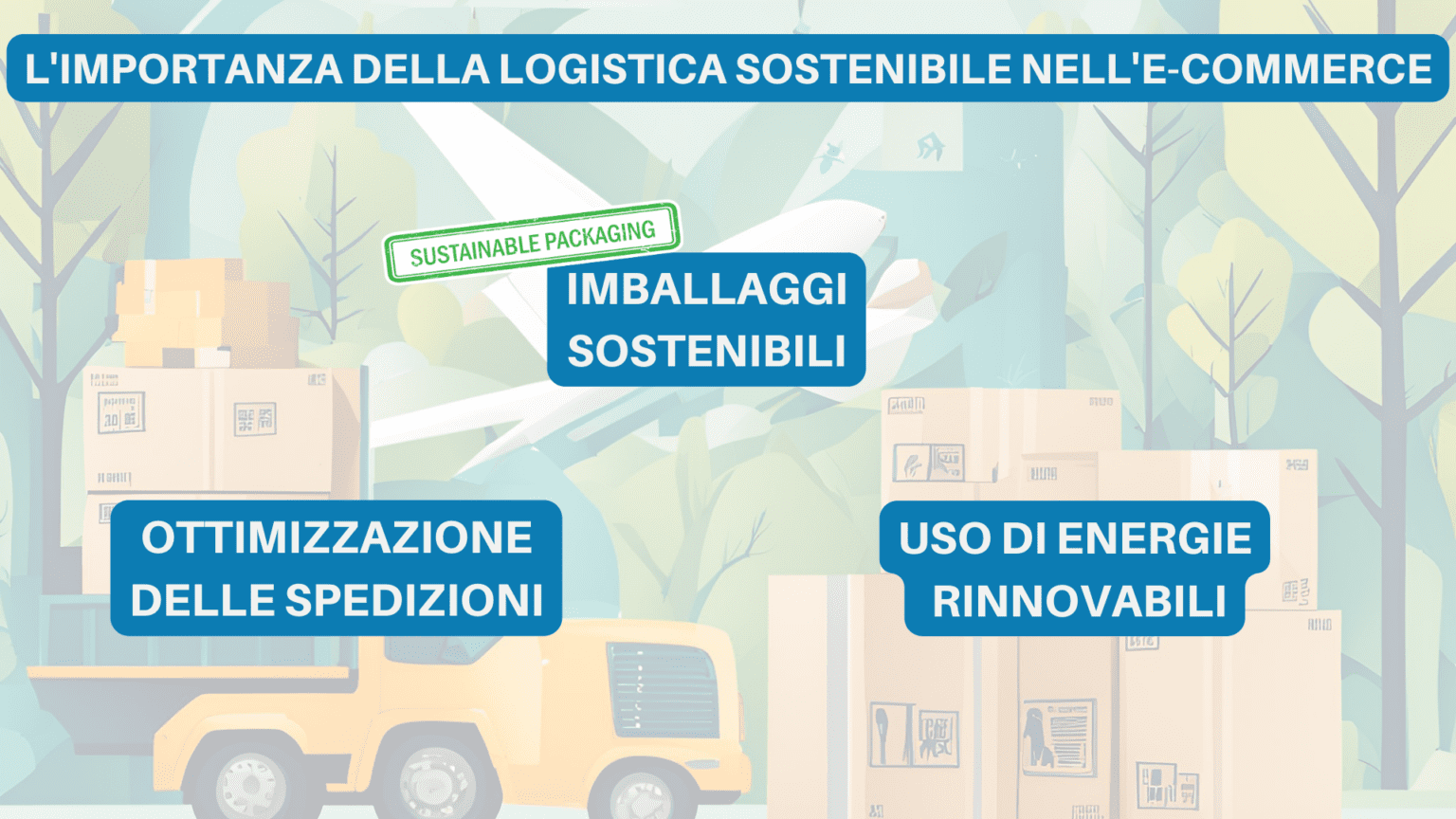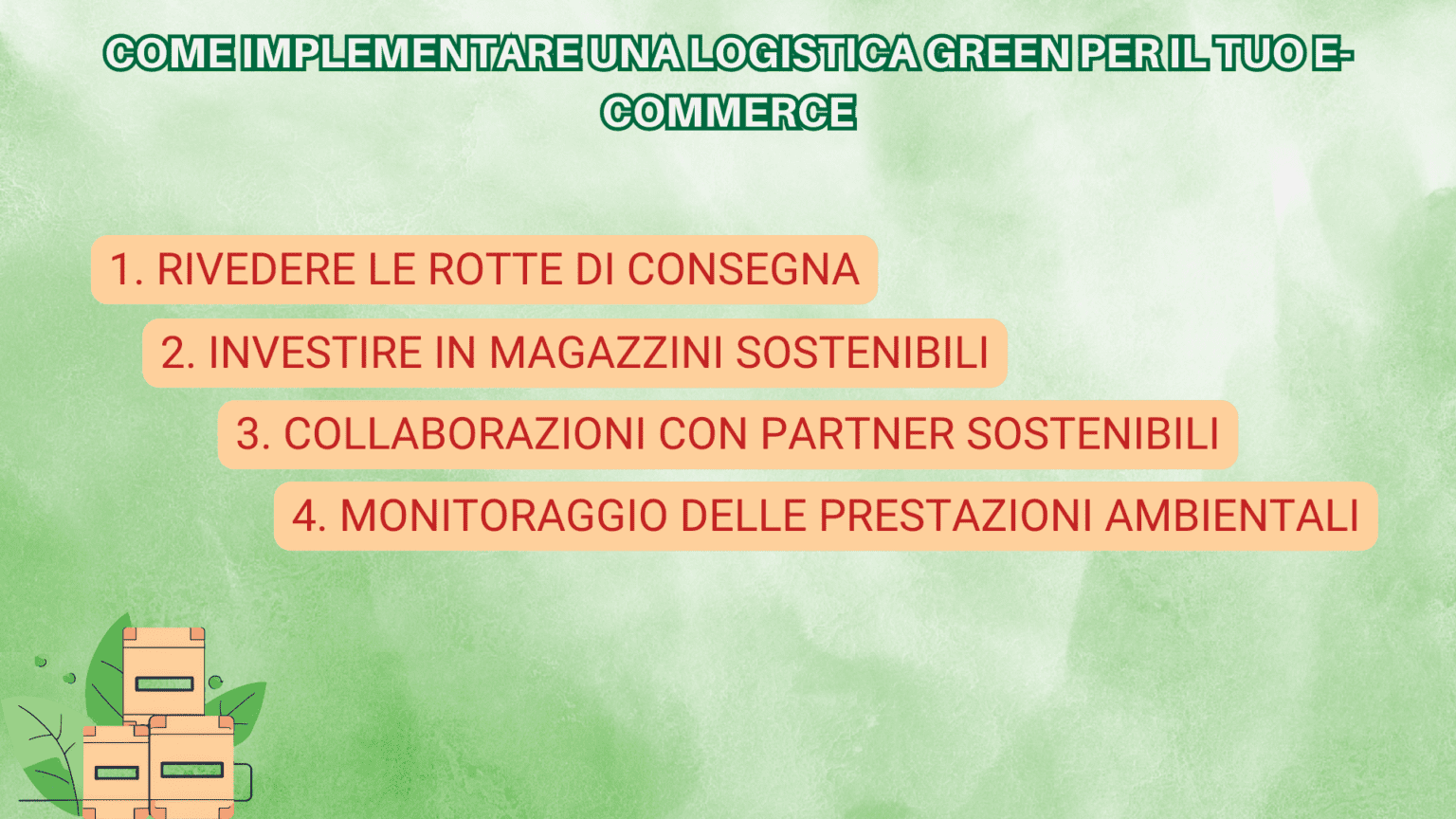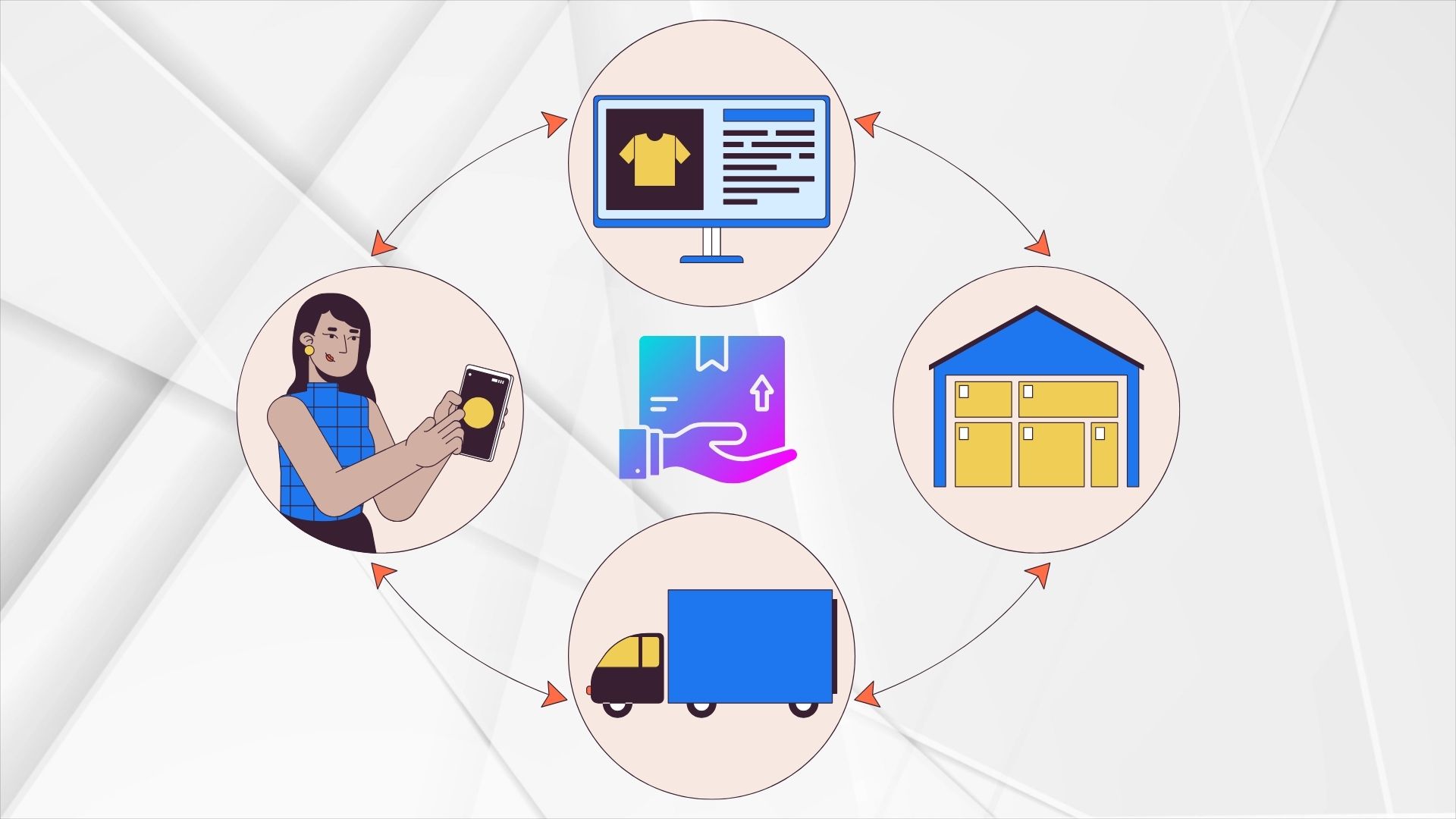Sustainablee-commerce has become an imperative for modern businesses. As awareness about environmental issues increases, consumers are increasingly choosing to shop from companies that adopt environmentally friendly practices. In this context, sustainable logistics is a crucial point in reducing the carbon footprint of e-commerce operations. But what exactly does “sustainable e-commerce” mean? How can green logistics help reduce environmental impact? Let’s find out together how companies can implement green strategies in their supply and shipping chains to promote greener e-commerce.
What is a Sustainable E-commerce?
A sustainable e-commerce is a business model that focuses on environmentally friendly practices throughout the entire product life cycle. This includes production, inventory management, transportation, and product delivery. Sustainable e-commerce seeks to minimize environmental impact, optimize resource use, and promote social and economic well-being.
Adopting green strategies not only means reducing carbon emissions, but also involves thinking about waste management practices, responsible use of resources, and adopting corporate policies that serve the community. In the context of e-commerce, logistics plays a key role because a significant portion of carbon emissions come from shipping products.

The Importance of Sustainable Logistics in E-commerce
La sustainable logistics is a crucial aspect of reducing an e-commerce’s carbon footprint. Traditional logistics practices, which often employ high-carbon means of transportation and non-recyclable materials, can have a significant environmental impact. Companies can contribute to a more sustainable future by optimizing their supply chain and adopting innovative technologies to reduce energy consumption.
Shipment Optimization
One of the main areas where e-commerce companies can make a difference is in optimizing shipping. For example, choosing to ship more efficiently by consolidating multiple orders into a single shipment or opting for low-emission means of transportation can significantly reduce the carbon footprint.
Sustainable Packaging
Packaging is also a key component of logistics. Using recyclable, biodegradable or compostable materials to package products helps reduce the volume of waste. The search for more sustainable packaging solutions is a major challenge for many e-commerce companies. Some companies are also exploring alternatives such as reusable packaging, which offers numerous advantages both economically and environmentally.
Use of Renewable Energy
In addition to choosing low-emission means of transportation, using renewable energy to power logistics operations is another key step in reducing the carbon footprint. For example, warehouses and distribution centers can be powered by solar or wind energy, reducing dependence on fossil fuels.
How to Implement Green Logistics for Your E-commerce

Implementing sustainable logistics requires careful planning and the adoption of strategies that can be integrated into the existing supply chain. Let’s look at some key steps for building a green logistics system.
1. Review Delivery Routes
A first step in optimizing logistics is to review delivery routes. Using route optimization software, companies can reduce vehicle miles traveled, thereby reducing fuel consumption and emissions. In addition, adopting electric or low-emission vehicles for delivery can further reduce environmental impact.
2. Investing in Sustainable Warehouses.
Managing inventory in a sustainable way is another crucial point. Investing in sustainable warehouses using environmentally friendly technologies, such as LED lighting and efficient heating systems, can significantly reduce energy consumption. In addition, choosing to locate warehouses in strategic locations close to major consumer markets canreduce shipping distances and optimize logistics.
3. Collaborations with Sustainable Partners
Working with suppliers and partners who share the same sustainability values is essential. For example, choosing couriers and carriers that use environmentally friendly vehicles or adopt sustainable practices in their operations can amplify corporate efforts to reduce the carbon footprint.
4. Environmental Performance Monitoring.
To measure the effectiveness of sustainable logistics policies, companies should implement systems to monitor environmental performance. This can include tracking CO2 emissions, energy consumption and the volume of waste generated. Monitoring these parameters enables companies to continuously improve their sustainability strategies.
Benefits of Sustainable E-commerce
Investing in sustainable e-commerce offers many long-term benefits. In addition to reducing environmental impact, a green business model can improve a company’s reputation and attract new customers. Many consumers today are more inclined to support companies that adopt green policies and are committed to reducing their carbon footprint. In addition, sustainable policies can lead to cost savings by optimizing logistics operations and reducing energy consumption.
Conclusion
Adopt a sustainable e-commerce is a strategic move not only to reduce the environmental footprint, but also to increase competitiveness in the marketplace. Sustainable logistics plays a key role in this process, with the adoption of green technologies, the choice of environmentally friendly materials for packaging, and the optimization of shipping routes. As environmental awareness increases among consumers, integrating green practices into your e-commerce business is not only an ethical choice, but a real opportunity for growth.
FBY is here to help you take the first step toward greener e-commerce. Learn how our services can support your business in achieving your sustainability goals.




